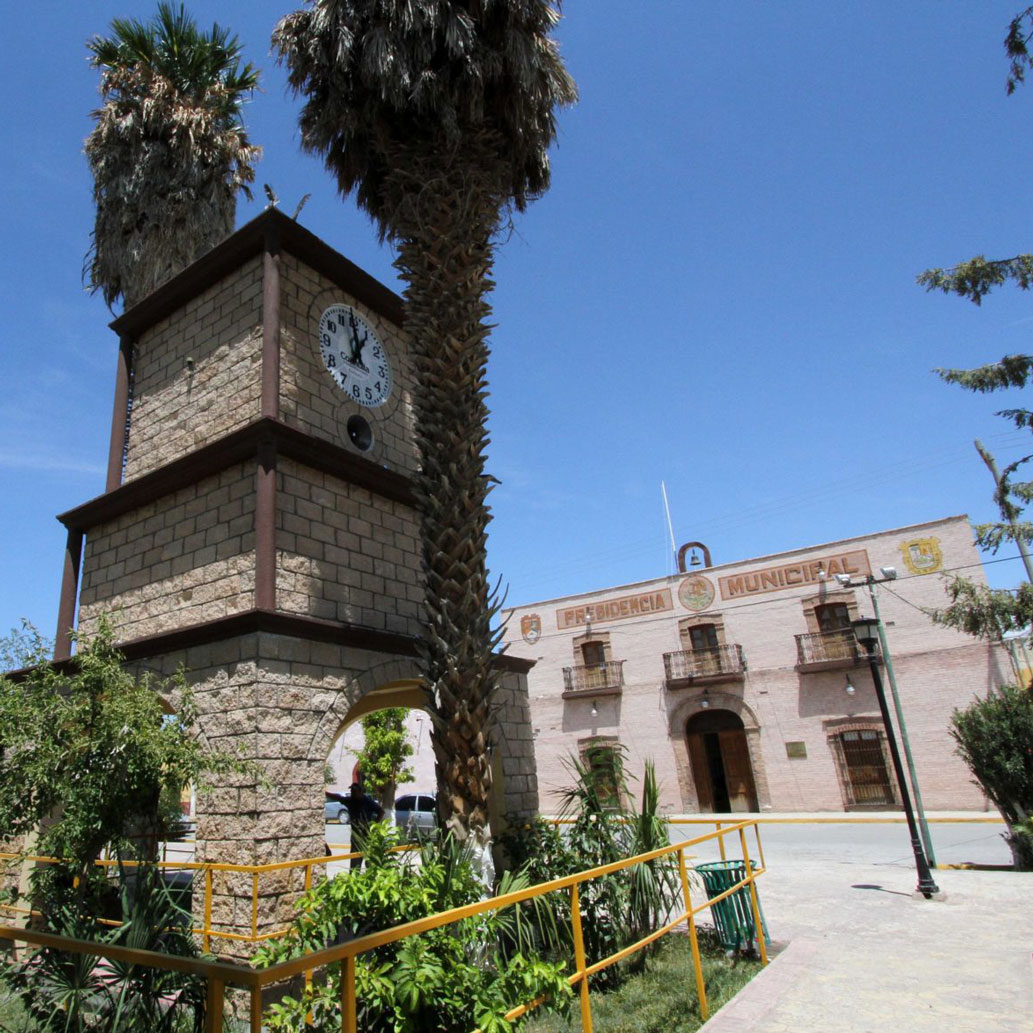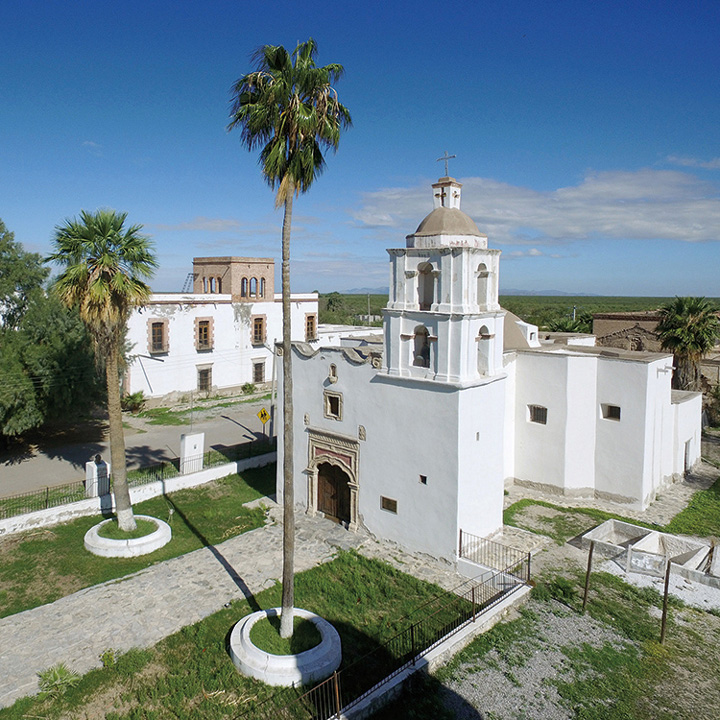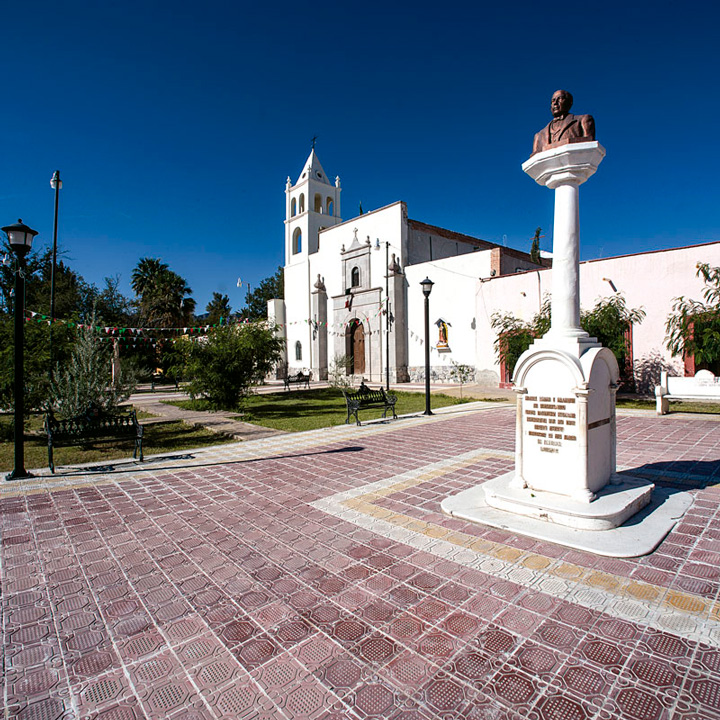
Viesca

Read more
 Slide to the left to continue
Slide to the left to continue
◈The way in which the desert has preserved its flowers in this almost three-hundred-year-old town, which is a pioneer in the settlement of the Comarca Lagunera: dunes and dramatic landscapes, the ruins of a salt factory and a beautiful baroque chapel.

.
.
◆ Admire the beautiful landscape of the Bilbao Dunes, a favorite setting for the film industry. There you can practice sandboarding.
◆ Visit the ruins of the Salt Factory, an unmissable place between the old facilities of the Sulfatos de Viesca company and the dry salt flats.
◆ Contemplate religious art pieces in its Museum of Sacred Art.
◆ Marvel at the Chapel of Señora Santa Ana de los Hornos, 15 km from Viesca.
◆ Admire the Parroquia de Santiago Apóstol, the largest construction in Viesca.
◆ Cool off in the spring at the Juan Guerra Recreational Park.

On July 24, celebration of Santiago Apóstol.

❖ Bilbao Dunes
These enigmatic dunes are the result of the erosion of the surrounding mountainous formations.
This is one of the most beautiful areas of sand dunes in Mexico. The hills of sand, always in movement, are reminiscent of the deserts of Arabia, Namibia or the Sahara.
This is a natural protected area of 40 acres. Only 20% of it is designated for eco-tourism activities.
This is an ideal place to walk, do exercise or just feel the soft sand beneath your feet. There are some who even go sandboarding.
Film Set
Because of their evocative power and their photogenic virtues, the Bilbao Dunes have served as a set for countless films, including the following Mexican productions:
Todo por nada (Everything for Nothing) (1968)
El topo (The Mole) (1970)
Ángel caído (Fallen Angel) (2011)
Salvando al soldado Pérez (Saving Private Pérez) (2011)
And the foreign productions:
One Man’s Hero (1999)
Blueberry, l’expérience secrète (2004)
Dragonball Evolution (2009)
Although it may seem a solitary place, the dunes conceal an entire ecosystem. Insects and reptiles are not difficult to spot. It is said that there is even an endemic lizard with the scientific name Uma exsul, which is why entering the area on quadbikes or any motorized vehicle is not recommended. Simply arrive on foot and enjoy it.
❖ Plaza de Armas and the Bicentennial Clock
The Plaza de Armas in Viesca has a tranquil look about it, with its tall palm trees and the splendid sky above it.
This is a lovely square filled with trees. Don’t forget to find the tree where Miguel Hidalgo stopped to rest for several hours on his way to Texas. Although it is dead now, you will recognize it by the plaque placed there by the authorities, as well as the house where he spent the night, located on Calle Independencia, number 9.
Wander through the center of the town and take a moment to appreciate the modest kiosk with its copper-colored roof. On the north side you find the main structure: a robust tower made of three parts, erected to celebrate two hundred years of independence.
The upper segment is home to the Reloj del Bicentenario, a clock with four faces that gives the monument its name. The finishing touch is an eagle, its wings spread, devouring a snake.

❖ Enjoy Viesca flavors
Taste corn gorditas (with traditional fillings such as pork rinds, beans or picadillo). For dessert, dulce de leche and calabazete.
Or a delicious ice cream from Juan García, the favorites are strawberry and walnut, look for it in the streets of the center.
❖ Visit the most beautiful chapel from north region of Mexico
Founded by the Jesuits 400 years ago, this place was one of the first settlements in the Comarca Lagunera. After the expulsion of this religious order in 1767, the estate passed into private hands.
At the turn of the century, a tram, railway car and locomotive factory operated here and survived until 1924. A few buildings remain from all of that.
Opposite it is the jewel of this place, the Chapel of Señora Santa Ana, built in the 18th century, still in the time of the Jesuits.
After decades, it was intervened and restored in 2010 thanks to the organization Adopt a Work of Art, which has left it spectacular.
The building is full of surprising artistic elements such as its finely carved quarry doorway, its thick carved wooden door and its thick bell tower.
This is one of the most beautiful temples in north region of Mexico. Seeing it is reason enough for the trip to Viesca.
❖ Rest in the parish of Santiago Apostol
Towards the west side of the Plaza de Armas de Viesca, is the Parroquia de Santiago Apóstol, a white and harmonic building.
This enclosure was born with the town. Various architectural interventions have left it with a gray doorway and a three-body bell tower with a pyramidal top.

❖ Fiesta Patronal de Santiago Apóstol y Día del Ausente (Festival of the Patron Saint James the Apostle and “Day of the Absent”)
One of the Viesca’s most special celebrations is the Día del Ausente.
Celebrated every year on July 24th, the day of the patron saint Santiago Apóstol. This date was set as a reminder of the difficult times that Viesca has passed through. The people of Viesca who have been forced to leave their homeland aim to return home that day.
The celebrations include cavalcades, a procession of parade floats, as well as a general celebration in the Parque Juan Guerra.






















